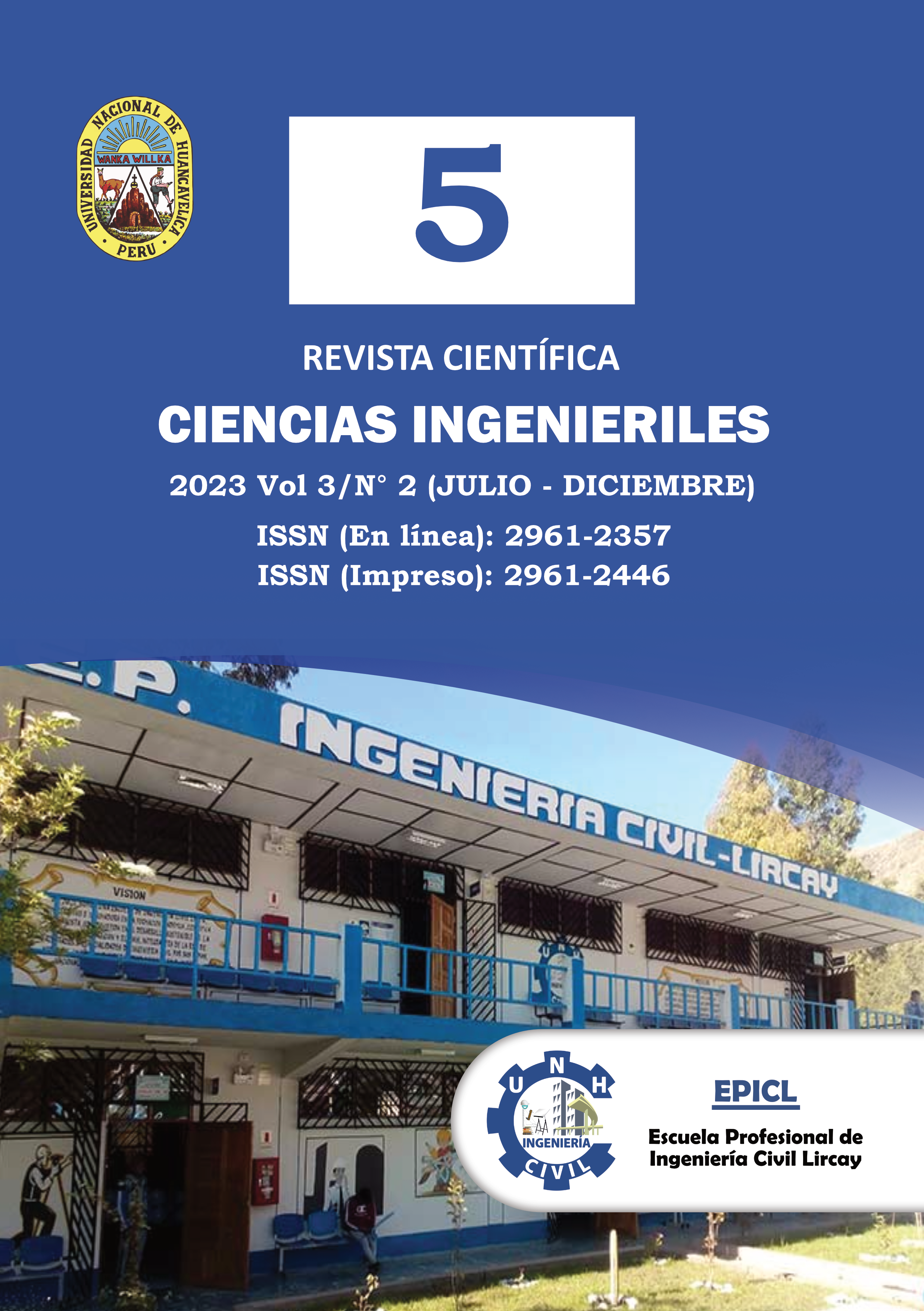Application of the Virtual Work Principle in obtaining the structural response of isostatic frames
DOI:
https://doi.org/10.54943/ricci.v3i2.269Keywords:
Unit load method, Principle of Virtual Work, TemperatureAbstract
The purpose of this research work is to determine the structural response of an isostatic frame subjected to different load systems, through the unit load method and SAP2000 software, thereby obtaining what effects contribute more towards deflection, in the same way for displacements. horizontal lines affected by temperature, the scope is descriptive-comparative with a descriptive research methodology, where it was obtained that the deflection by the SAP2000 software and the PTV has a variation of 0.006347%, being a negligible margin of error, in addition to the contribution of the effect by axial and shear deformation has a minimum influence of 0.01385%, with the effect of bending deformation being the predominant with 99.98614%, for the horizontal displacement affected by temperature, through the SAP2000 and PTV software, a margin of 0.0054% was obtained which is not significant, where the relevant contributions towards horizontal displacement were the effects of bending and axial deformation, with a contribution of 95.5962% and 4.4038% respectively. Therefore, it turns out that by the PTV and the SAP2000 software, both the horizontal and vertical displacements have a non-significant variation, on the other hand, to obtain a deflection, only the effect of bending deformation is considered, and for a horizontal displacement affected By temperature, both the effect of axial deformation and bending are analyzed.
Downloads
References
Cuadros, P., & Seguin, C. E. (2005). Verificación Del Mecanismo De Colapso De Una Estructura Por Programación Lineal.Mecánica Computacional, 1707-1722.
Escartín Sáez, M., Lou Pina, J. M., & Martínez Barca, M. Á. (2014). Comparativa entre el análisis elástico lineal y análisis plástico de un pórtico rígido plano.
Flórez López, J. (1999).Plasticidad y fractura en estructuras aporticadas. Centre Internacional de Mètodes Numèrics en Enginyeria (CIMNE)
.Gonzales Cuevas, Ó. M. (2002). Analisis Estructural (1a ed.). LIMUSA. https://www.udocz.com/apuntes/142819/analisis-estructural-gonzales-cuevas.
Jiménez, J. O. J. (2004).Análisis clásico de estructuras(Vol. 22). Univ. Nacional de Colombia.
Mariño Terán, D. S. (2019). Implementación de guías de ensayo de laboratorios de análisis estructural, dinámica estructural y mecánica de materiales(Bachelor's thesis, Quito).
Quituisaca, L. G. M. (2022). Facultad de Ingeniería Carrera de Ingeniería Civil.
Hibbeler, R. (2012). Analisis Estructural (8a ed.). Pearson. https://www.academia.edu/15952734/An%C3%A1lisis_Estructural_R_C_Hibbeler_8va_Edici%C3%B3n_.
Rodríguez Castiblanque, A. (2003). Análisis experimental de la capacidad portante de un puente arco de obra de fábrica de ladrillo.
Sarmiento Lugo, B. R., & Rodriguez Rodriguez, Y. A. Diseño de material didáctico con interactividad para apoyar la enseñanza de los diagramas para vigas.
Surichaqui, M., Quispe, H., & Palomino, H. (2021). Dinámica estructural en Ingeniería Civil.Revista Científica Ciencias Ingenieriles,1(1), 13–19. https://doi.org/10.54943/ricci.v1i1.201.
Rupay Vargas, M. J. (8 de Mayo de 2021). UDocs. https://www.udocz.com/apuntes/265090/ae-capitulo-04-trabajo-virtual.
Published
How to Cite
-
Abstract872
-
PDF (Español (España))758
-
HTML (Español (España))35
Issue
Section
License
Copyright (c) 2023 Miguel Guzman

This work is licensed under a Creative Commons Attribution 4.0 International License.













 DOI:10.54943/ricci.
DOI:10.54943/ricci.








